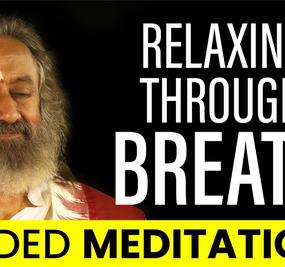What is Nadi Shodhan Pranayama
Nadi = subtle energy channel; Shodhan = cleaning, purification; Pranayama = breathing technique.
Nadis are subtle energy channels in the human body that can get blocked due to various reasons. The Nadi Shodhan pranayama is a breathing technique that helps clear these blocked energy channels, thus calming the mind. This technique is also known as Anulom Vilom pranayama.
What blocks the nadis
- Nadis can get blocked on account of stress
- Toxicity in the physical body also leads to blockage of nadis
- Nadis can get blocked due to physical and mental trauma
- Unhealthy lifestyle
Impact of blocked nadis
Ida, Pingala and Sushumna are three of the most important nadis in the human body.When the Ida nadi is not functioning smoothly or is blocked, one experiences cold, depression, low mental energy and sluggish digestion, blocked left nostril. Whereas when the Pingala nadi is not smoothly functioning or is blocked, one will experience heat, quick temper and irritation, itching body, dry skin and throat, excessive appetite, excessive physical or sexual energy, and blocked right nostril.
3 Reasons to Practice Nadi Shodhan Pranayama
- Nadi Shodhan pranayama helps relax the mind and prepares it to enter a meditative state.
- Practicing it for just a few minutes every day helps keep the mind calm, happy and peaceful.
- It helps in releasing accumulated tension and fatigue.
How to do
- Sit comfortably with your spine erect and shoulders relaxed. Keep a gentle smile on your face.
- Place your left hand on the left knee, and palms open to the sky or in Chin Mudra (thumb and index finger gently touching at the tips).
- Place the tip of the index finger and middle finger of the right hand in between the eyebrows, the ring finger and little finger on the left nostril, and the thumb on the right nostril. We will use the ring finger and little finger to open or close the left nostril and thumb for the right nostril.
- Press your thumb down on the right nostril and breathe out gently through the left nostril.
- Now breathe in from the left nostril and then press the left nostril gently with the ring finger and little finger. Removing the right thumb from the right nostril, breathe out from the right.
- Breathe in from the right nostril and exhale from the left. You have now completed one round of Nadi Shodhan pranayama. Continue inhaling and exhaling from alternate nostrils.
- Complete 9 such rounds by alternately breathing through both the nostrils. After every exhalation, remember to breathe in from the same nostril from which you exhaled. Keep your eyes closed throughout and continue taking long, deep, smooth breaths without any force or effort.
Cautions to be taken
- Do not force the breathing, and keep the flow gentle and natural. Do not breathe from the mouth or make any sound while breathing.
- Do not use the Ujjayi breath.
- Place the fingers very lightly on the forehead and nose. There is no need to apply any pressure.
- In case you feel dull and are yawning after practicing Nadi Shodhan pranayama, check the time you take to inhale and exhale. Your exhalation should be longer than inhalation.
Tips
- It is a good idea to do a short meditation after doing Nadi Shodhan pranayama.
- This breathing technique can also be practiced as part of the Padma Sadhana sequence.
Benefits of Nadi Shodhan Pranayama
- Excellent breathing technique to calm and center the mind.
- Our mind has a tendency to keep regretting or glorifying the past and getting anxious about the future. Nadi Shodhan pranayama helps to bring the mind back to the present moment.
- Works therapeutically for most circulatory and respiratory problems.
- Releases accumulated stress in the mind and body effectively and helps to relax.
- Helps harmonize the left and right hemispheres of the brain, which correlates to the logical and emotional sides of our personality.
- Helps purify and balance the nadis – the subtle energy channels, thereby ensuring a smooth flow of prana (life force) through the body.
- Maintains body temperature.
Contraindications
None. After you have learnt this breathing technique from an Sri Sri Yoga teacher, you can practice this pranayama on an empty stomach, 2-3 times a day.
Yoga practice helps develop the body and mind bringing a lot of health benefits yet is not a substitute for medicine. It is important to learn and practice yoga postures under the supervision of a trained Sri Sri Yoga teacher. In case of any medical condition, practice yoga postures after consulting a doctor and an Sri Sri Yoga teacher. Find an Sri Sri Yoga course at an Art of Living Center near you.


















